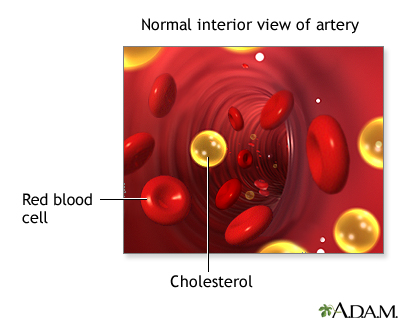Cholesterol - InDepth
An in-depth report on the diagnosis, treatment, and prevention of unhealthy cholesterol levels.
Self Care
The Basics
Talking to your MD
Tests for cholesterol
A Closer Look
- Cholesterol - InDepth (Detailed Report)
- Cholesterol-lowering medications - HMG-CoA reductase inhibitors (statins) (Alternative Medicine)
- Cholesterol-lowering medications - fibric acid derivatives (Alternative Medicine)
- Cholesterol-lowering medications - bile acid sequestrants (Alternative Medicine)
- Hypercholesterolemia (Alternative Medicine)





